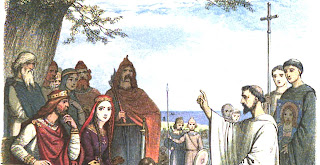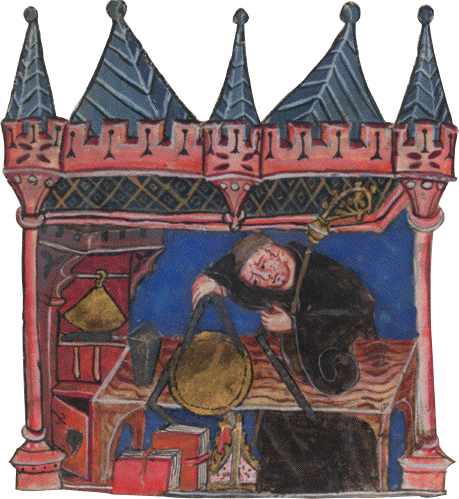The arrangement was very sensible and politic. There was another cousin, however, who tried to throw a wrench into the works. Joan of Savoy had tried to claim the County of Savoy for herself after the death of her father, Edward. Edward was succeeded by Aymon, but Joan thought she should have succeeded her father even though Savoy was governed by Salic law. She was acknowledged at the time as having a point, but was convinced to renounce her claim and cause no trouble in exchange for an annual pension.
Now, with a nine-year-old in power, she renewed her claim. Two years after Amadeus became count, she received a similar deal, renouncing the claim in exchange for a yearly allowance of 5000 livres.
Amadeus was educated in and enjoyed the arts of war, reading both the classical era work on war, De Re Militari, and the more recent De Regimine Principum, concerning the morality of ruling temporally. He was also devout, taking a vow of fasting that was so strict that he endangered his health and had to ask Pope Clement VI to release him from the vow.
In 1348, the Black Death was sweeping over Europe, and Savoy was not spared. As was often the case in times of disaster, Jews were blamed. Savoyan nobles tried to protect them, putting some in locked towers for protection. Savoyan courts tracked down those responsible for killing Jews, executing some and fining others.
Amadeus was nicknamed the "Green Count." On his 19th birthday in 1353, a series of tournaments were held. He appeared with a green silk tabard over his armor and green plumes on his helmet. He was accompanied into the lists by 11 green-clad knights, each led by a lady dressed in green who led the knight's horse by a green cord. Green became a popular color for him and his court after that. (Green was difficult to produce before the 1700s and the discovery of new chemicals. To get green, you had to dye fabric first yellow, and then blue. To have a lot of green showed extravagance.)
Tomorrow we'll look at his adult life.


















